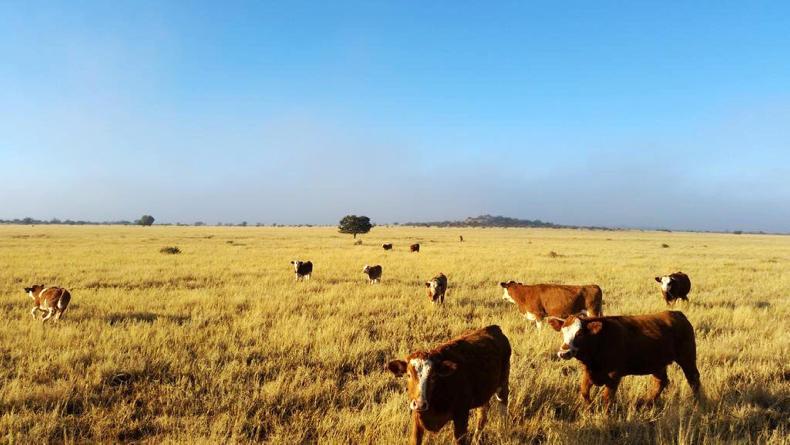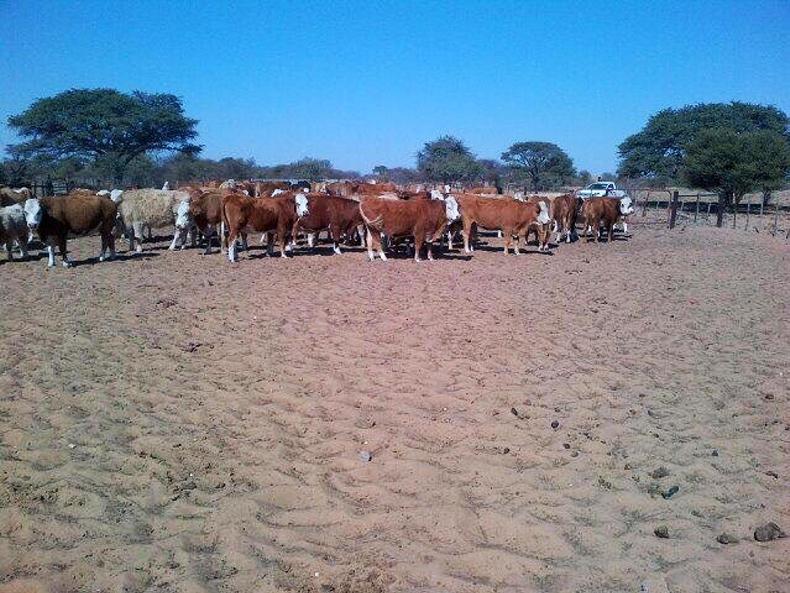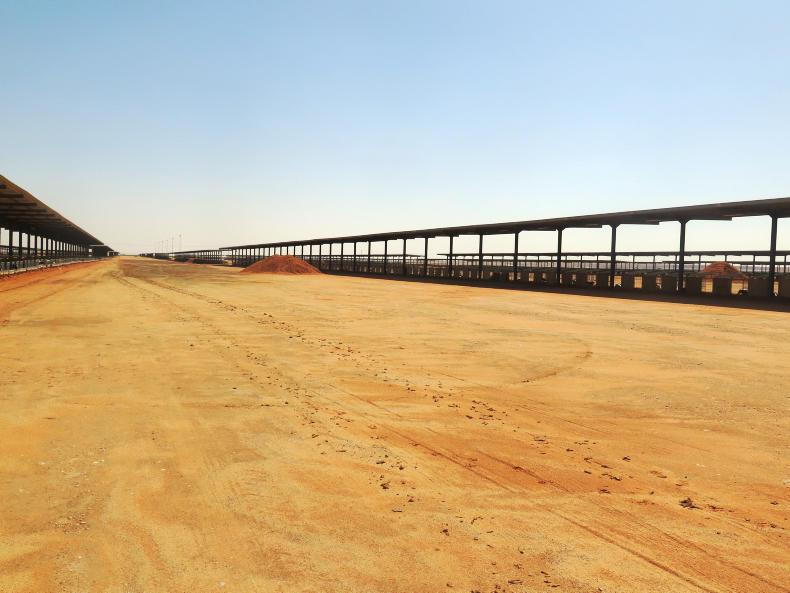I’m married to Wilma and we have three children. We live in the Northwest province of South Africa (SA) where the Bushveld ends and the Kalahari desert starts. The nearest town (population 600) and school is 23km away.
I am the third generation to farm on our current piece of land, but the sixth-generation farmer in my family. Cattle rearing for meat is the main type of agriculture in our area. In South Africa we have an open market system and international prices directly influence our market. Currently meat prices are on a record high.

We farm 382 Simmentaler breeding cows on 3,800ha. We also buy about 400 weaners in four-month cycles at 180kg and grow them to just under 300kg. Our average rainfall for the last 40 years is 508mm but it has been less than 350mm for four of the last seven years. This is a massive concern.
The aim is only to help the cattle survive, not fatten them.
In the last 10 years we only bought large quantities of feed once to help the herd survive. The abundance of bush and trees is an excellent source of food in drought. Because cattle don’t naturally graze leaves we need to cut it then mulch it and feed it.

In drought years, we reduce breeding stock by selling the weaker females. It’s kind of a selection opportunity.
We normally don’t assist at calving. We believe in a no-nonsense approach to breeding. Half of the herd calve between June and August with the rest calving from November to January. We breed cows with the bull for 90 days. We need each and every single cow to calf.
Farming in SA is a cut-throat enterprise. We get no grants or subsidies from government and for that reason every single female and every inch of land must produce.
We have 1,800ha of grassland which we rotate with cowpeas (a heat-tolerant plant). This rotation helps rehabilitate ground and the nitrogen supply. We graze all year round with an eight-month growing season.
There are two types of grasses used: Cenchrus ciliaris and Anthephora pubescens.
During summer, stocking rate is one livestock unit to two hectares. Currently we are busy harvesting cowpeas.
They are mixed with maize that we buy from local producers for supplementary feeding for the weaners.
Farming with large wildlife can be challenging. Jackals tend to bother cows during calving and they are the main reason I stopped having sheep on the farm. Roaming wildlife such as Kudu, Steenbok and Hartbeest can destroy cover crops.
Our biggest losses are due to stock theft. Because of the size of farms, bushes and remoteness it’s easy to steal cattle. Cattle are a lucrative commodity and easy to steal and sell.
My country had a very troublesome past and an uncertain political future. The murder rate among the 33,000 farmers with European heritage is 20 times higher than the international average. Mostly because of remoteness, the farms are easy targets. We have a higher probability of getting killed than most soldiers anywhere in the world.
Despite this, we are blessed and in need of nothing.
How many farmers can take their kids for a 500km drive to have a look at the big five (lion, elephant, buffalo, rhino and leopard)? Seeing these animals is when I feel I’m home, this is where I belong.






 This is a subscriber-only article
This is a subscriber-only article







SHARING OPTIONS: